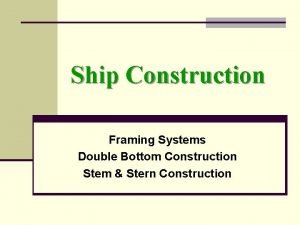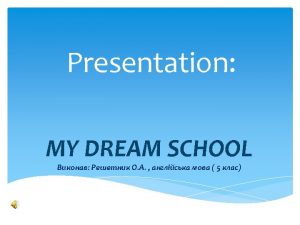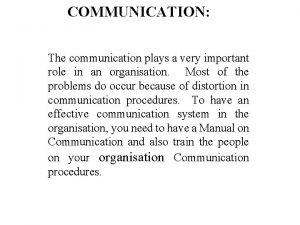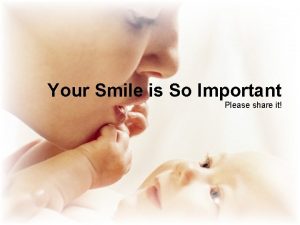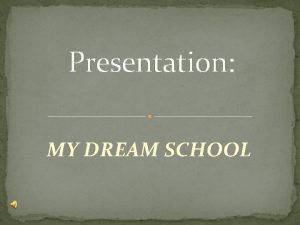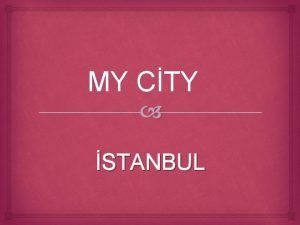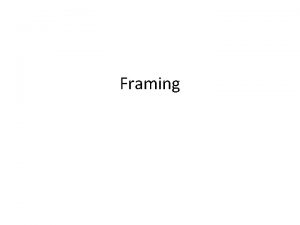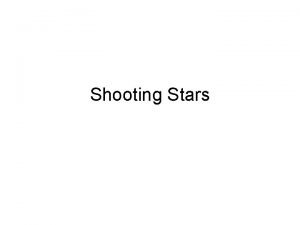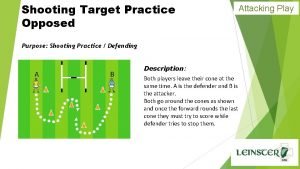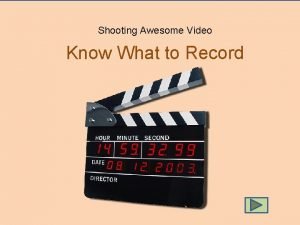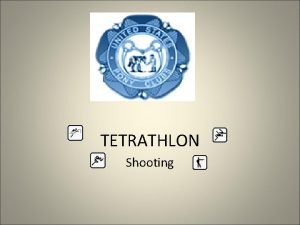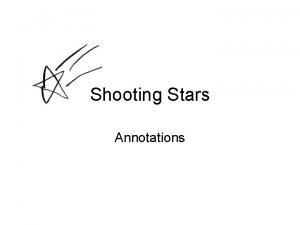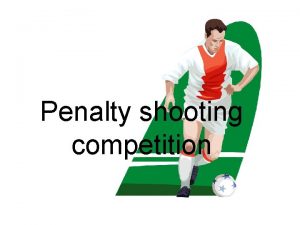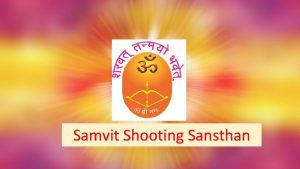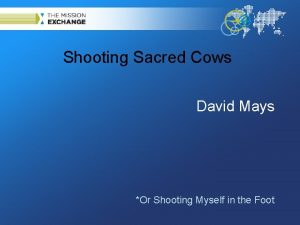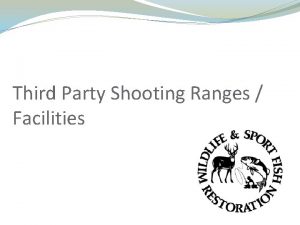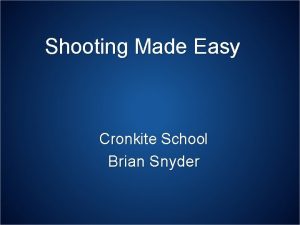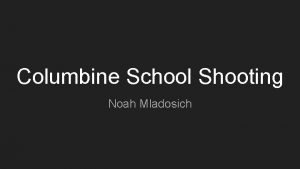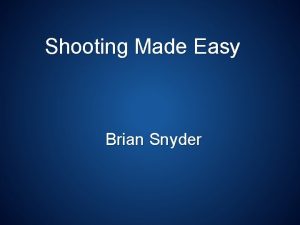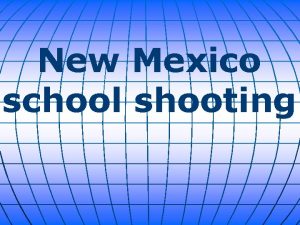Framing and shooting Framing This is very important















- Slides: 15

Framing and shooting

Framing This is very important when photographing subject and when filming a subject. This is all down to how the subject appears on the screen. This is best explained through the different shot types that

Close up A close up shot when it is framed right gives detail in the subject drawing the viewer into what is happening. These types of shots are used for dramatic effect. Facial close ups are the most common practices of the close up style.

mid shot This shot mainly shows the head and torso of the person in a product. This can be used in any shooting style. This is a shot that can be repeated throughout a scene and usually builds a picture for the audience using the characters body language. It seems like this is a very general shot however it still holds great importance.

Establsihing shot This type of shot is typically used at the beginning of films to give the viewers an idea of what is happening or about to happen on screen. These shots usually start in one of the main locations in showing the important parts of this location.

shooting Shooting is the practice of putting all the shots that we just discussed into a sequence that flows perfectly. This is achieved through various shot changes throughout the film. This involves many camera techniques that I am now going to discuss.

Tracking For example this can be used along with a mid shot to follow a subject through the film. This shot is mostly commonly to follow the actor walking or taking part in an activity. This technique involves the camera being mounted on a cart and placed on tracks to allow for it to be moved without causing any distortion on screen. The effect that this has is that it allows the audience to follow the characters into the film almost. https: //www. youtube. com/watch? v=0 p. Ify. TXphg. E

Dutch Using dutch angles is something that `snt really used much in films but more in music videos. This camera technique involves the use of a steady cam. The camera is hand held and tilted from certain angles to give a very mysterious and interesting style to the product.

Pull focus This in my opinion is one of my favorite camera techniques. This camera technique when used correctly really grabs the attention of the viewer. There is no set rule on the equipment that needs to be used for this so it can be carried out handheld or on a tripod. The pull focus technique involves the camera operator focusing in on a significant object and blurring the background so that it is the viewers main focus.

Length of shot This is often abbreviated to ASL (Average Shot length). This term defines how long a shot runs for on screen this can be anything from a few mili seconds to 15 seconds. There is no written rule on how long a shot should actually be however it normally stays within a short time period. Rope by Alfred Hitchcock has an ASL of 433. 9

Setting up means to get all the relevant equipment that is being used on shoot together and get it set up to its best working standard. Location shoot- On a location shoot the camera operator takes out all the equipment to ensure that It is in good working order. The camera operator on location will first begin by setting their tripod, placing the camera on the tripod and then points it towards the subject that they are shooting. In studio- Most studios requires a lot more effort but the transportation of equipment is cut completely as the equipment is already there. The same rules apply there as a location shoot only there are more checks to be done e. g. mic checks, sound checks and white balance.

Number of takes This is the name given to the amount of takes that happen in a production. The number of takes can vary on a shoot depending on the circumstances during the shoot. Some productions can require 1 take which is usually very rare most productions take a lot of takes in order of making the best possible product.

Responding to Action The person in charge of this is the director. Without these responses to action there would be no product at the end of production. The Director calls out all of these actions on set for example- Cameras Rolling- Everyone presses record on the camera, Sound running- Relevant audio equipment is put into action, Cut- The production is stopped.

Lighting techniques Lighting is something that plays a very important role when filming a product. Different types of light can be used in film in different ways. e. g. Natural lighting and artificial lighting. Key light- This is piece is used to light up the subject being filmed Fill light- This product of lighting Is used to take shadows away from the subject Main light- This is the main subject of lighting involved in the product.

 Transverse framing system
Transverse framing system It is considered as the base of the floor framing plan.
It is considered as the base of the floor framing plan. Stealer plate in ship construction
Stealer plate in ship construction Figure 10
Figure 10 Multiplication of scientific notation
Multiplication of scientific notation Fewfew
Fewfew Receiving table/area
Receiving table/area Quantifiers for milk
Quantifiers for milk School is very important
School is very important Radio telex stations
Radio telex stations Communication plays a very important role in
Communication plays a very important role in Smile is very important
Smile is very important My dream school assignment
My dream school assignment Very important place
Very important place Hi im a dog
Hi im a dog In cement hardening process instants are very important
In cement hardening process instants are very important


